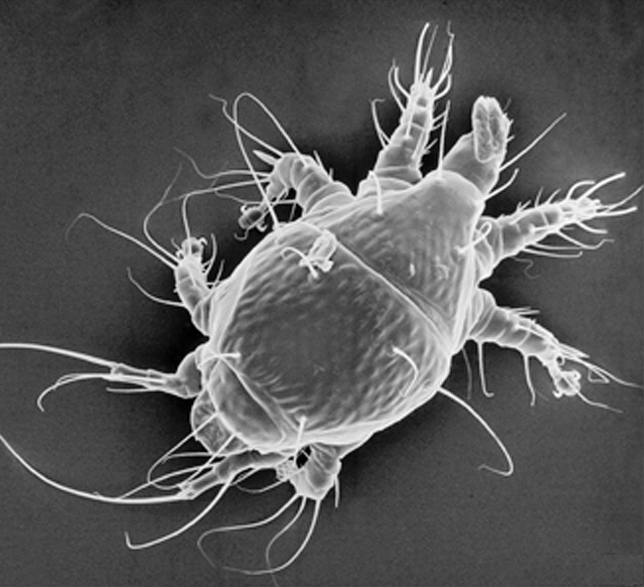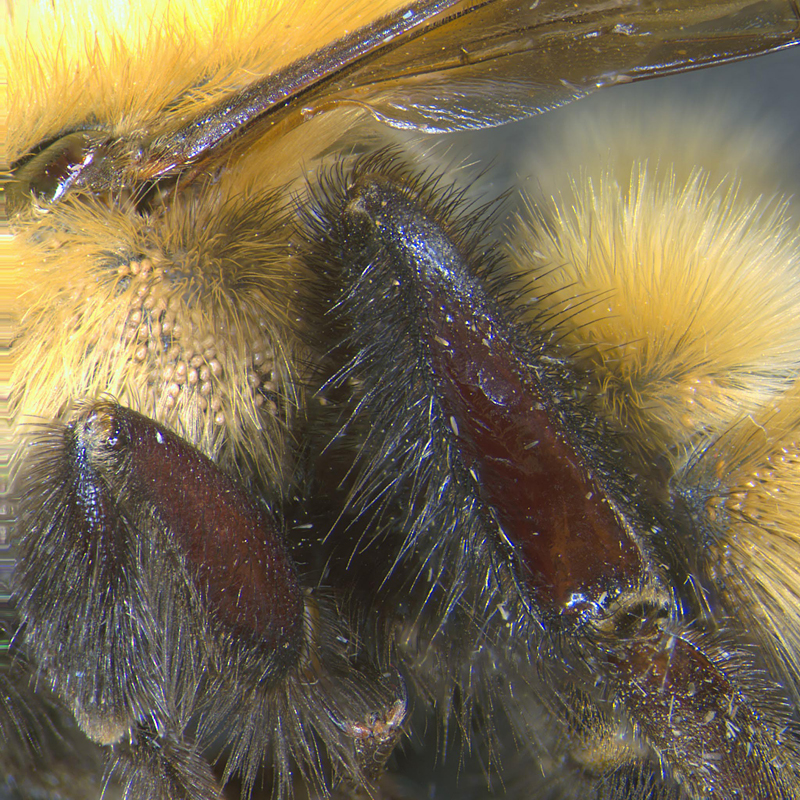
Bees provide essential services to human agriculture and natural ecosystems worldwide by pollinating flowering plants. Humans depend heavily on bees, as many crops would fail without bee pollination. In exchange for pollination, plants offer bees food in the form of pollen, nectar, and floral oils. A variety of mites may also interact with bees, either as parasites feeding on bees themselves, as kleptoparasiteskleptoparasite:
An animal that takes prey or other food from another animal that has caught, collected, or otherwise prepared the food, including stored food. Both kleptoparasitic bees and kleptoparasitic mites feed on food provisioned in the host bee nest. Kleptoparasitic bees do not make their own nests; they stealthily deposit eggs in the nest of a bee host and can act as phoretic hosts for mites only because they deliver them to nests of actual bee hosts. Variant spelling: cleptoparasite.
feeding on the bees' food, or as mutualists or commensals feeding on waste or harmful organisms in bees' nests. This results in what is known as a tri-trophic interaction, meaning that three trophic levels (in this case, bees, mites, and plants) are all interdependent on each other. Bees pollinate plants, plants give bees food, and mites can have a great effect on these interactions.
Bee mites can injure or kill their hosts and spread harmful diseases. When bees and their mites have coexisted long-term, the damage these parasites cause may be minimal, but when bees are stressed or a new pathogen or parasite is introduced, the results may be catastrophic. The decline of honey bee populations worldwide has been largely attributed to the spread of the mite Varroa destructor, once a relatively benign and little-known parasite of the Asiatic honey bee, Apis cerana. Varroa destructor became both a severe pest and a disease vector once it shifted to a new host, the western honey bee, Apis mellifera, one of the most relied-upon pollinator species in the world. Hundreds of thousands of honey bee colonies around the world have been decimated due to the spread of this mite. On the other hand, mutualistic mites can protect bees from disease, other parasites, or kleptoparasiteskleptoparasite:
An animal that takes prey or other food from another animal that has caught, collected, or otherwise prepared the food, including stored food. Both kleptoparasitic bees and kleptoparasitic mites feed on food provisioned in the host bee nest. Kleptoparasitic bees do not make their own nests; they stealthily deposit eggs in the nest of a bee host and can act as phoretic hosts for mites only because they deliver them to nests of actual bee hosts. Variant spelling: cleptoparasite.
. These beneficial mites provide sanitary or cleaning services to developing bee larvae, such as removing harmful fungi and other microorganisms. Knowledge of these mites may improve management strategies of pollinators in the future.

Following the decline of honey bees due to attacks by parasitic mites, some bees are currently being managed as alternative pollinators: mason bees (Osmia), bumble bees (Bombus), and leafcutter bees (Megachile) in temperate regions, and stingless bees (Meliponini) in tropical regions. Trade of these pollinators is growing, as bees are moved among continents to increase crop production. These alternative bee species are more effective pollinators for certain crops, and they are not generally aggressive to humans. However, as global trade in pollinators grows, so does the likelihood of inadvertently moving potentially destructive mites along with them. There are more than 700 described and at least 200 undescribed mite species associated both with managed and wild bees, and many of these species have the potential to be as harmful as Varroa destructor if introduced to a new pollinator host. Most of these species are poorly known and difficult to identify, and their effect on their bee hosts needs to be studied.
In order to help prevent future Varroa-style invasions, we need trained personnel and sufficient technical support for quarantine officers at ports of entry so they can understand the problem and can identify suspect mites. We have created Bee Mite ID as a tool to educate biosecurity specialists and beekeepers about the diversity, distribution, and natural host ranges of bee mites and to provide a means of fast and accurate identification of exotic mite pests with emphasis on those attacking major agricultural pollinators, including those found in the tropics.